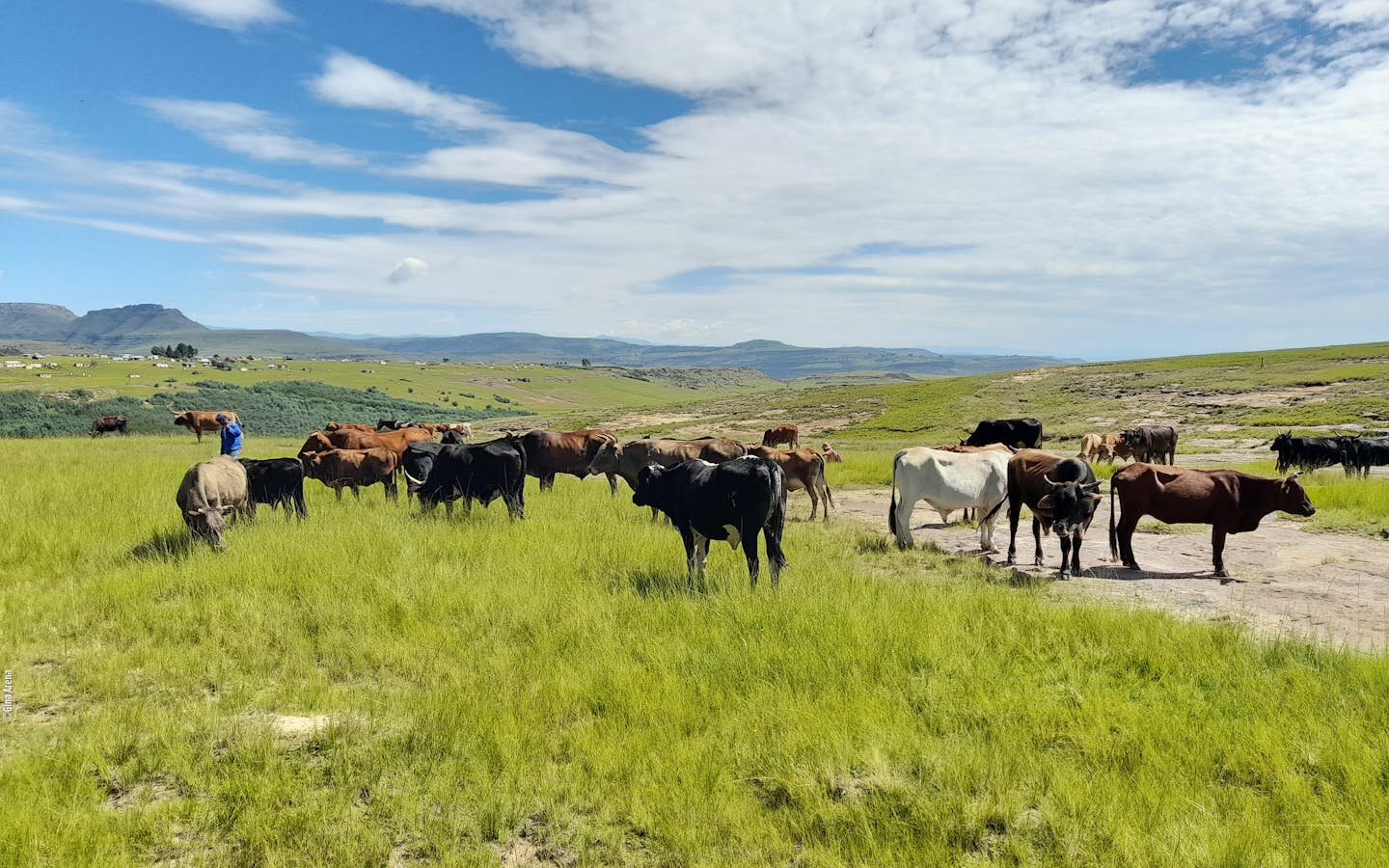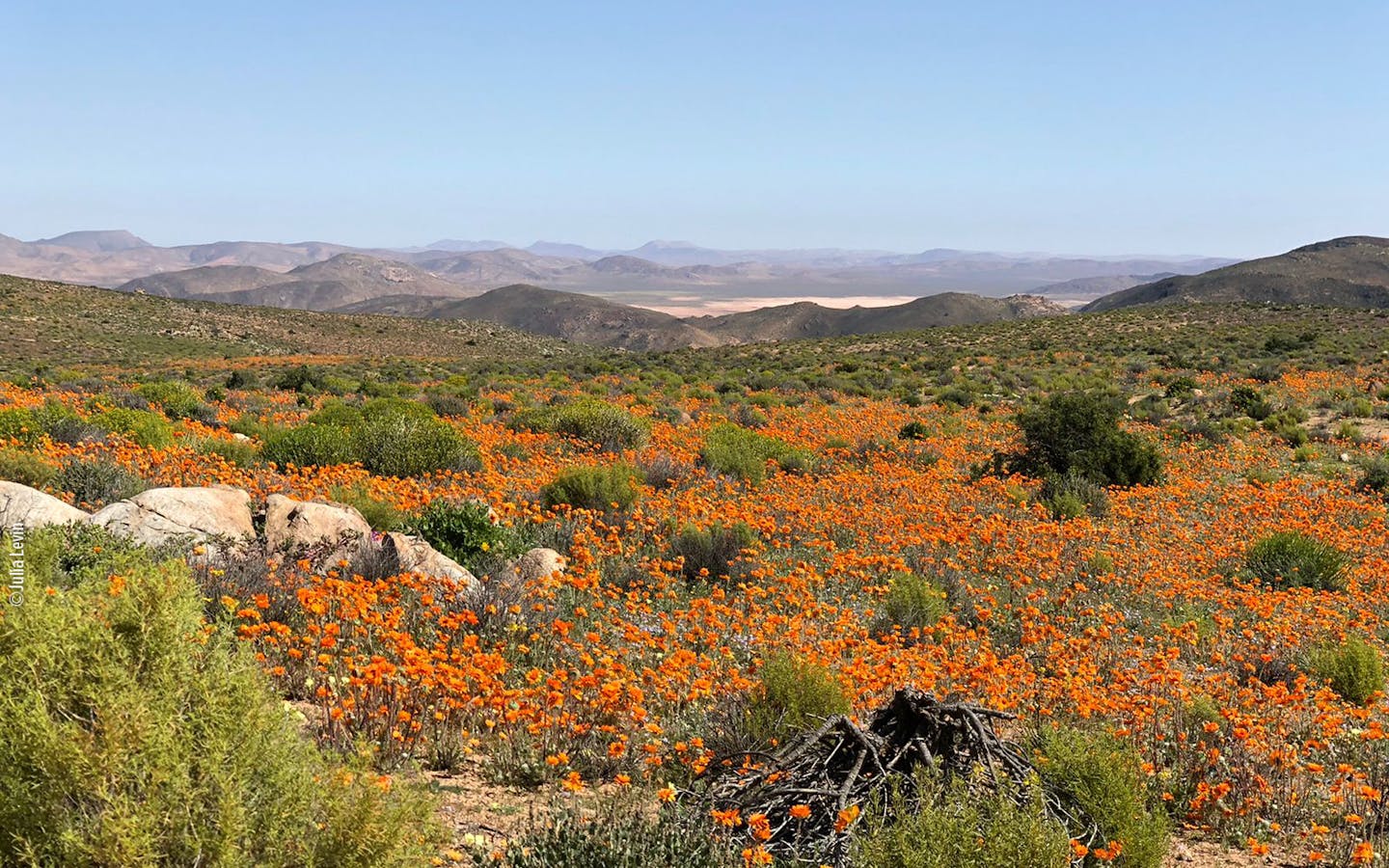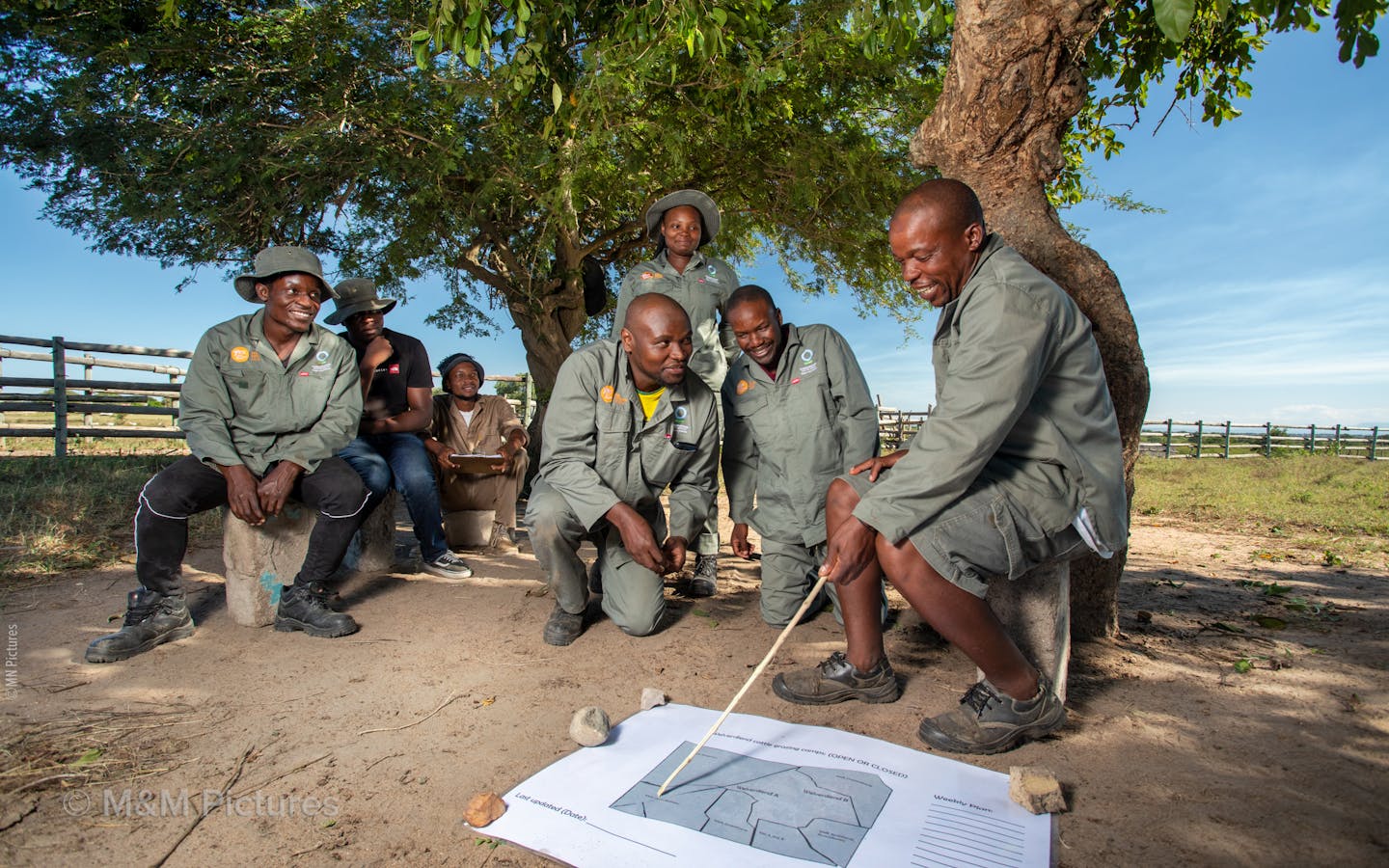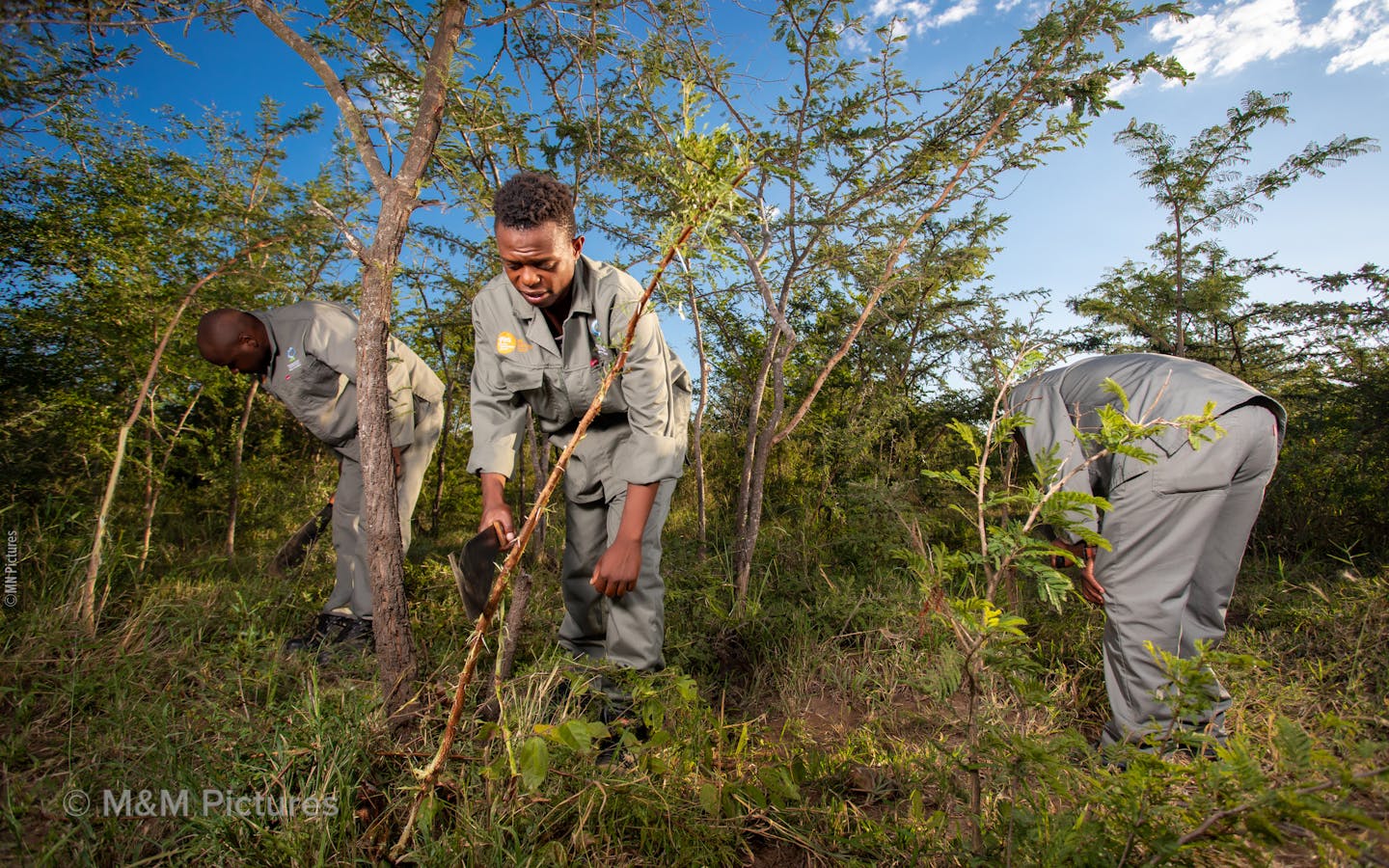Conservation South Africa

OUR VISION
A South Africa where growth and development are catalyzed through the sustainable stewardship of nature
OUR MISSION
Restore and secure key reservoirs of nature across South Africa for the benefit of all

Work with communities, government, civil society and the private sector
Actively engage in the management of Africa’s rangelands and oceans
Promote nature positive economies that support food and climate security, and biodiversity conservation
OUR PRIORITIES
We leverage a set of integrated field demonstrations in key geographies in South Africa and take these to scale through partnerships and policy engagements across the country and the region. We have developed viable and science-based models for protecting and restoring biodiversity-rich landscapes while creating jobs and stabilising the climate. We support nature-positive development models towards achieving lasting conservation results, improved livelihoods and sustained economic growth.
Reimagining Conservation
By 2030 we will work with government and our partner communities to adopt a more compassionate, conscious, inclusive and diverse approach to conservation that prioritises the participation of rural women and youth in all aspects of landscape governance
Climate positive planning & finance
By 2030 we will encourage the uptake of nature-positive policy frameworks, spatial planning tools and financing mechanisms at the district and national level in South Africa
Jobs for Nature
By 2030 we will support the creation of 30,000 nature-positive work opportunities that support the protection, restoration and management of at least 2 million hectares of high biodiversity rangelands, coastlines and oceans in South Africa
Healthy African Rangelands
By 2030 we will support the replication, scaling and uptake of the Herding for Health approach across 7 million hectares of highly biodiverse native savannas, grasslands and shrublands in at least 6 African countries
HOW WE WORK
We work with national, district and local government, local communities, civil society, and the private sector to implement sustainable landscape management strategies to restore degraded ecosystems, while supporting the creation of green enterprises, green jobs, and green skills. We focus on vulnerable households with an emphasis on rural women, youth and small-scale farmers and fishers.
COMMUNITIES
We work with local communities, and paid and voluntary restoration teams, to carry out best practice rangeland management and restoration interventions on communal land
TRAINING
We train communities, local government, traditional authorities and small businesses to ensure that effective structures, operational plans and good management of rangelands are adopted and linked to sustainable economic activities and climate resilience
INDEPENDENCE
We foster independence by equipping communities, businesses and government with skills and prospects to take independent control of rangeland management
RESEARCH
Our research deepens our understanding of how our work can reduce greenhouse gas emissions and increase water security and biodiversity, while supporting livelihoods
BEST PRACTICE
We apply and replicate best practice from our restoration model using incentives such as market access to stimulate local economies

LEARNING MATERIALS & OPPORTUNITIES
We develop educational training materials and offer learning opportunities to members of communities, business owners and government to learn about sustainable agriculture, climate change and green economic development in the context of communal rangelands
DOCUMENT & DISSEMINATE FINDINGS
We develop tools for communities and partners to document work on the ground and impacts are shared in a coordinated way
GLOBAL KNOWLEDGE POOL
Our documented findings contribute to the global pool of knowledge and strategies for achieving environmental and human resilience through Conservation International
POLICY
We work with government to influence policy and access funding for sustainable agriculture, climate change and green economic development in communal rangelands
FUNDING AVENUES
We explore funding streams and capital investments to fund ongoing work
WHERE WE WORK
We support the improved management of 4 million hectares of communal rangelands and seascapes through our landscape demonstrations in the Namakwa District, the Alfred Nzo District and the Kruger to Canyons Biosphere. These sites fall within the globally important Succulent Karoo and the Maputaland-Pondoland-Albany biodiversity hotspots. Our technical, policy, fundraising and operational support offices are based in Cape Town and Johannesburg.
Namakwa District
An arid region that receives less than 300 mm of rain each year. A high diversity arid-adapted shrubs, grasses and coastal vegetation grows in the area. CSA's demonstration sites are situated in the Succulent Karoo biodiversity hotspot. The sites also contain 70 high priority biodiversity areas covering over a million hectares of semi-arid rangeland. Since much of the area is unsuitable for crop farming, people living in the area are greatly dependent on livestock farming (mostly sheep and goats).
Alfred Nzo District
The Umzimvubu Catchment in the Alfred Nzo District Municipality extends from the Lesotho escarpment to the northern Wild Coast, adjacent to the Indian Ocean. The landscape lies within the Maputaland-Pondoland-Albany biodiversity hotspot. Four key biodiversity areas fall within the demonstration landscape, forming a large watershed which includes a freshwater ecosystem priority area. Although the Umzimvubu is prized as a near-natural free-flowing river, it is classified as vulnerable because of rapid rates of degradation and the extensive spread of invasive alien wattle species. Communal cattle farming is practiced throughout the region.
Kruger to Canyons
The Kruger to Canyons Biosphere region runs along the western border of the Kruger National Park within the Limpopo and Mpumalanga provinces towards the Blyde River Canyon in the west. CSA works to support the biosphere through implementation of projects and by providing support to other demonstration sites across the biosphere. The overall landscape comprises 2.2 million hectares of protected areas and agricultural lands containing savanna woodlands, Afromontane forest and grasslands. The demonstration sites also fall within the northern tip of the Maputaland-Pondoland-Albany biodiversity hotspot. It is one of the most biodiverse areas for large mammal species within southern Africa. Communal cattle farming is practiced in the region.
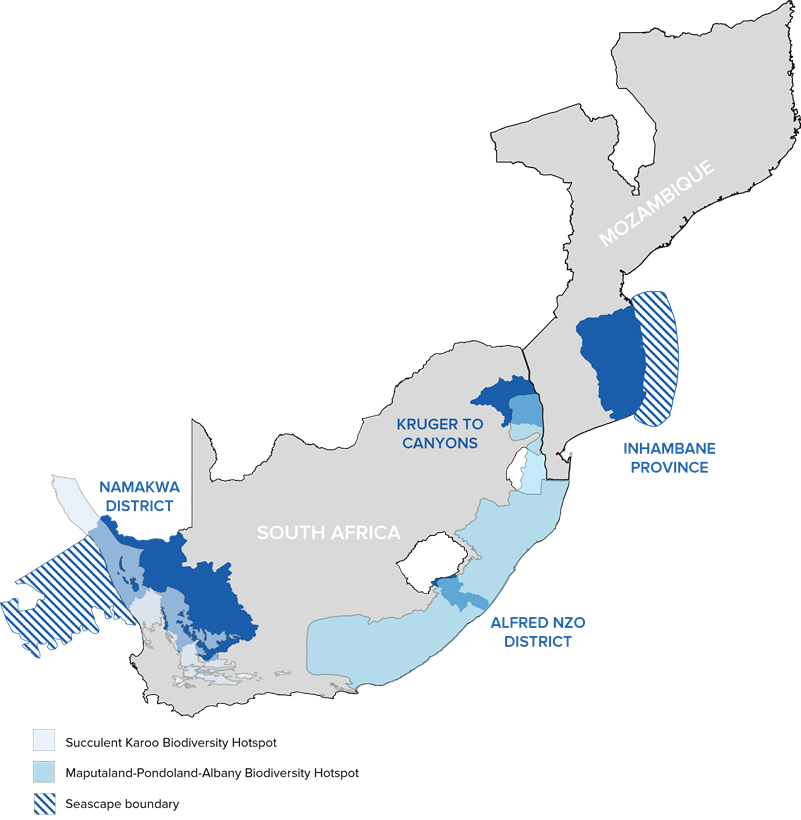
OUR IMPACT TO DATE
Herding for Health is a community driven livestock management model for rangeland restoration, biodiversity conservation, and improved livelihoods through herding, capacity building and collective governance. The model, which was piloted at our demonstration sites in South Africa, is now being scaled in 6 African countries covering an area of 7 million hectares of native grasslands, savannas and shrublands where people, livestock and wildlife co-exist.
Scaling Herding for Health
Registered name: Khuselíndalo South Africa NPC t/a Conservation South Africa
COMPANY REGISTRATION NO: 2010/000 325/08 | PBO NO: 930 033 503
